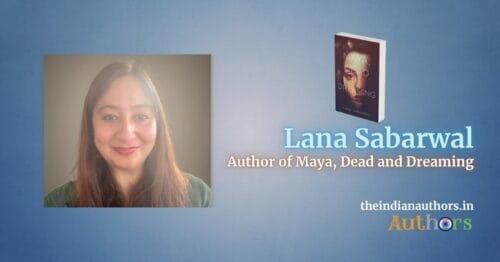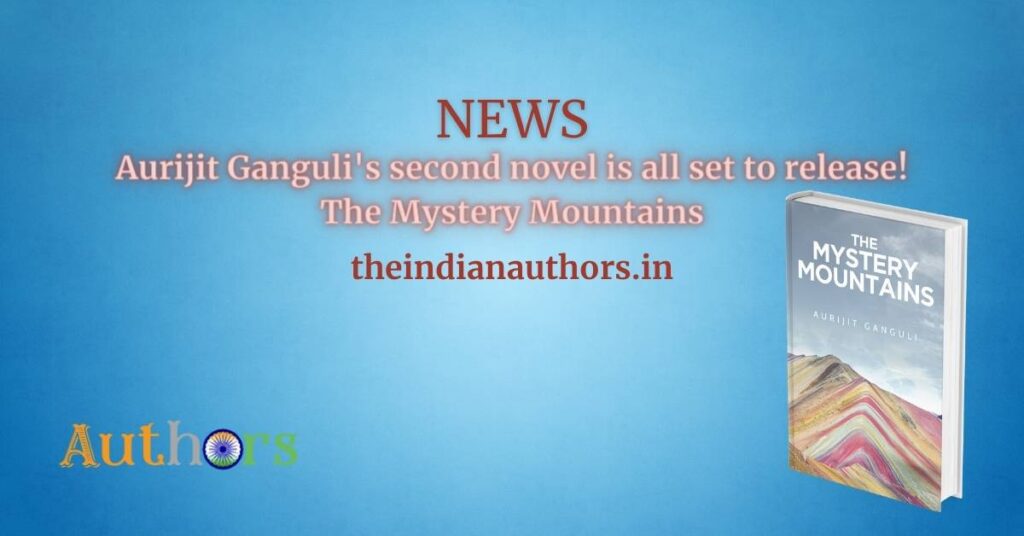It is rare for a debut novelist to command immediate attention purely on the strength of their prose, but Lana Sabarwal’s Maya, Dead and Dreaming has done precisely that. Readers and critics alike have taken note of her vivid storytelling, her metaphorically rich narrative, and her assured fictional craft, qualities that often take years for writers to develop. Sabarwal’s ability to construct an atmosphere thick with tension while maintaining lyrical precision suggests a writer who has honed her voice with unusual clarity from the outset. What stands out most is her control over language, balancing descriptive elegance with the disciplined pacing of a mystery. This is not a novel that relies solely on plot twists; it demands attention for its writing as much as its intrigue. That’s why I decided to feature this emerging novelist, who happens to be someone with an Economics background, on The Indian Authors platform. In this article, we will explore what distinguishes Lana Sabarwal as an author and how far she could fare against her idols, Agatha Christie and Jhumpa Lahiri.
With her well-received debut, Sabarwal adds another significant name to the growing list of accomplished Indian diaspora authors, though her work distinguishes itself by bridging two seemingly disparate traditions. While she openly admires Agatha Christie and Jhumpa Lahiri, her writing does not merely imitate them. Instead, she synthesises their strengths, merging Christie’s intricate plotting with Lahiri’s profound emotional resonance. Much like Lahiri’s fiction, Maya, Dead and Dreaming is steeped in nostalgia, where the past is not just remembered but actively shapes the present. The small-town setting of Shogie, with its buried secrets and unspoken tensions, mirrors the quiet yet devastating weight of history that Lahiri often explores. Yet Sabarwal infuses this with Christie’s gift for suspense, ensuring that every revelation feels earned rather than contrived. The result is a narrative that feels both literary and gripping, a combination that is difficult to pull off but which Sabarwal manages with notable skill.

One of the most striking aspects of Sabarwal’s writing is her ability to craft prose that is both vivid and thematically layered. Consider a passage where Munna, the protagonist, describes her recurring nightmares: “Maya appears as an old witch, her skin paper-thin, her eyes gleaming with challenge. The dream does not feel like memory but like a warning.” The imagery is unsettling yet poetic, reinforcing the novel’s central tension between truth and illusion. Elsewhere, Sabarwal’s descriptions of Shogie’s landscape—“the creek’s dark waters, swallowing secrets whole”—elevate the setting beyond mere backdrop, making it an active participant in the story. At her best, Sabarwal’s prose recalls the psychological depth of Daphne du Maurier or the atmospheric precision of Tana French, writers who excel at merging mood with meaning. There are moments, however, where her lyrical tendencies risk slowing the narrative, particularly in passages that luxuriate in period detail. Yet these are minor missteps in an otherwise tightly controlled style, one that suggests Sabarwal is as much a student of literary fiction as she is of classic detective novels.
Readers have particularly praised Sabarwal’s mature writing style, which avoids the expositional heavy-handedness that often plagues debut mysteries. Her dialogue is sharp and purposeful, revealing character through subtext rather than overt declaration. The gradual unravelling of the central mystery—Maya’s death and the anonymous letter that resurrects it—is handled with remarkable patience. Sabarwal understands the importance of delayed gratification in suspense fiction, and she withholds the final revelation until the closing chapters without ever frustrating the reader. This structural discipline is reminiscent of Christie’s best work, where every clue matters and every red herring serves a purpose. What sets the debut novelist apart, though, is her willingness to let the emotional stakes drive the story as much as the plot mechanics. The Hickman family’s dysfunction is parsed with the same care as the mystery itself, ensuring that the resolution carries weight beyond mere intellectual satisfaction.
As Sabarwal’s readership grows, so too will expectations for her future work. Having demonstrated her ability to merge literary depth with genre conventions, she now faces the challenge of pushing her craft further without losing the qualities that made Maya, Dead and Dreaming so compelling. Will she delve deeper into psychological suspense, or might she explore more experimental narrative forms? Given her admiration for both Lahiri and Christie, she may continue to occupy the space between their styles, refining her unique blend of emotional nuance and meticulous plotting. Whatever direction she chooses, one thing is sure: Sabarwal has already established herself as a writer to watch, one whose prose and storytelling instincts suggest a long and noteworthy career ahead. For now, Maya, Dead and Dreaming stands as a testament to what happens when a novelist respects both the intellect and the emotions of her readers, delivering a story that lingers long after the final page.
Adarsh for The Indian Authors



